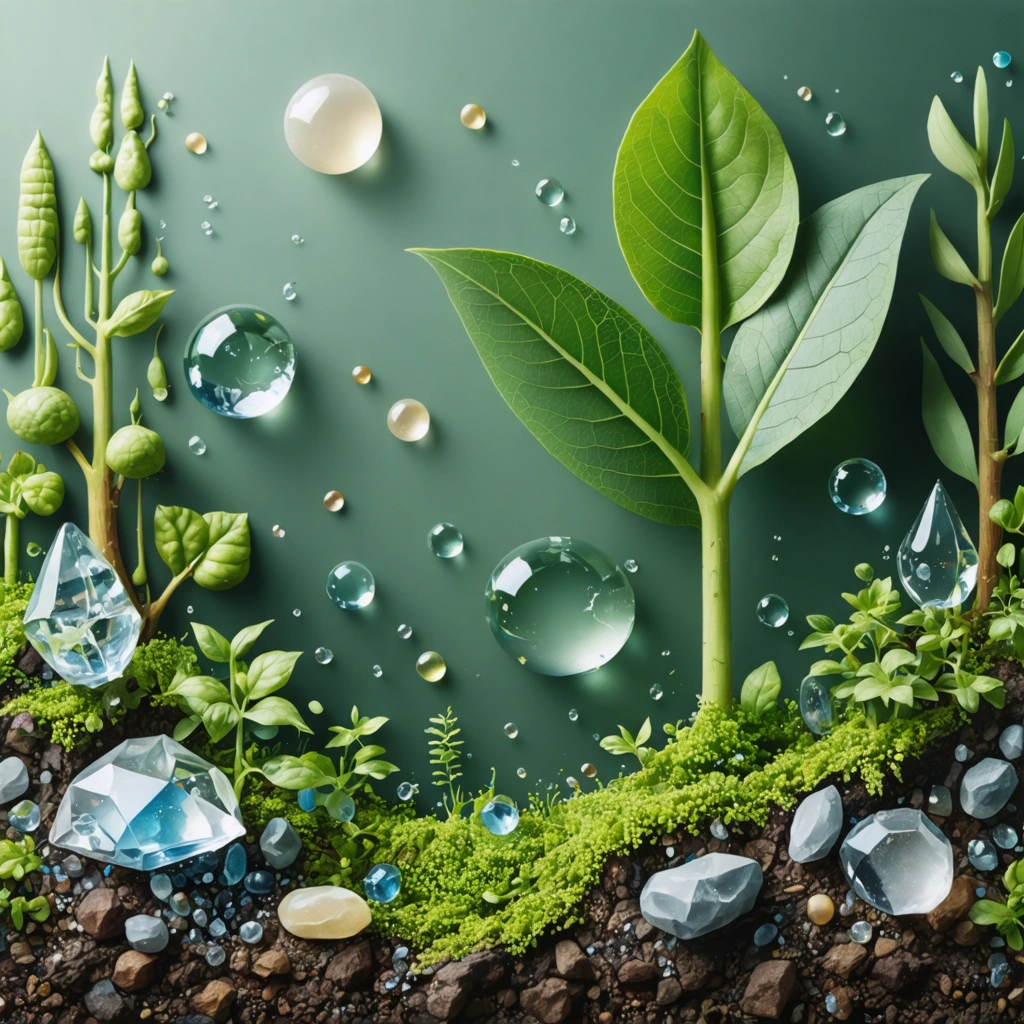
Introduction
The modern agricultural landscape is facing a new threat that is both insidious and far-reaching. Recent studies have revealed that microplastics, small plastic particles ubiquitously present in the environment, are significantly hindering photosynthesis in plants—affecting the growth and yield of staple crops such as wheat, rice, and maize. This degradation in plant productivity is not just an environmental issue; it is poised to have profound economic and humanitarian impacts, potentially increasing the number of people at risk of starvation by up to 400 million within the next two decades.
Understanding Microplastics and Their Pathways
Definition and Sources
Microplastics are tiny plastic fragments typically less than 5 millimeters in size. They originate from a variety of sources:
- Degradation of larger plastic waste in landfills and oceans
- Synthetic microfibers released during laundry processes
- Industrial processes and plastic manufacturing residue
- Wear and tear of plastic-based consumer products
Over time, these microplastics accumulate in the soil, water, and air, infiltrating various ecosystems. The pathway from plastic waste to microplastic pollution is complex and continuous, making the problem persistently challenging to manage.
Environmental Distribution and Agricultural Infiltration
Microplastics are easily carried by wind, water, and human activity. In agricultural contexts, they can be introduced through:
- Contaminated irrigation water
- Use of plastic mulch and greenhouse materials
- Application of contaminated compost or fertilizers
This widespread presence not only affects the immediate environment but also extends to the food chain, posing risks to both crop quality and human health.
The Impact of Microplastics on Plant Physiology
Disruption of Photosynthesis
Photosynthesis is the process by which plants convert sunlight into chemical energy, a mechanism central to plant growth and productivity. Microplastics can interfere with this process through several mechanisms:
| Mechanism | Impact on Photosynthesis |
|---|---|
| Physical Blockage | Particles on leaf surfaces can block sunlight, reducing light absorption. |
| Soil Contamination | Plastic particles alter the soil structure and water retention capacity, affecting root function. |
| Toxic Chemical Release | Leaching of chemicals from plastics can impair the plant’s metabolic processes. |
Each of these effects contributes to reduced photosynthetic efficiency, leading to lower biomass production and ultimately causing a significant decline in crop yields.
Consequences for Crop Yields and Food Security
The implications of hindered photosynthesis due to microplastics are profound:
- Yield Reduction: An estimated 4% to 14% loss in main crops such as wheat, rice, and maize directly impacts food availability.
- Nutritional Value: Lower plant growth affects the nutritional content of the produce, further endangering communities dependent on these staples.
- Economic Strain: Farmers face increasing economic challenges due to decreased productivity and higher costs associated with mitigating plastic contamination.
These challenges are expected to worsen as microplastic pollution intensifies, threatening to escalate the global crisis of food insecurity.
Strategies for Mitigation and Future Outlook
Policy and Regulation
To combat microplastic pollution, concerted efforts must be made at both national and international levels. Some of the recommended measures include:
- Enhanced Plastic Waste Management: Implement stricter regulations to reduce plastic usage and improve recycling processes.
- Monitoring and Regulation of Agricultural Inputs: Ensure that materials used in agriculture such as fertilizers and mulches are free from microplastic contaminants.
- Research and Innovation: Invest in research to develop biodegradable alternatives and technologies that can capture or neutralize microplastics in the environment.
Agricultural Best Practices and Technological Solutions
Farmers and agricultural professionals can also adopt several practices to mitigate the impact of microplastics:
- Soil Health Management: Regular soil testing to monitor microplastic levels and amend practices to improve soil structural integrity.
- Water Filtration Systems: Use advanced filtration systems in irrigation networks to reduce microplastic load in water supplies.
- Crop Diversification: Diversify crop types to include varieties that are less susceptible to the adverse effects of microplastic contamination.
Additionally, emerging technologies such as precision agriculture and remote sensing can help detect early signs of stress in plants, enabling timely interventions to alleviate the impacts of microplastic contamination.
Conclusion
The Urgent Need for Comprehensive Action
Microplastics represent one of the most challenging environmental threats of the 21st century. Their detrimental impact on plant photosynthesis not only reduces agricultural productivity but also jeopardizes global food security. The potential loss of up to 14% of staple crop yields is a stark reminder of the urgent need for comprehensive, multi-sectorial strategies to tackle this crisis.
To protect food supplies and ensure sustainable agricultural practices, it is imperative that policymakers, industry leaders, researchers, and farmers collaborate on solutions that address the root causes of microplastic pollution. By implementing robust regulatory frameworks, investing in innovative technologies, and promoting sustainable agricultural practices, we can mitigate the effects of microplastics and secure a stable food future for millions around the world.
Future Research and Global Collaboration
Further research is needed to fully understand the extent of microplastics’ impact on various crops and ecosystems. Future studies should focus on:
- Long-term field assessments of microplastic contamination in different soil types
- Innovative remediation techniques to remove or neutralize microplastics in agricultural settings
- Economic analyses to quantify the cost-benefit ratio of different mitigation strategies
Global collaboration remains key to overcoming this challenge. International agencies and governments must work together to develop global standards and share best practices in reducing plastic waste and its subsequent environmental footprint. Only through coordinated, sustained efforts can we hope to safeguard both the environment and the livelihoods of millions across the globe.




